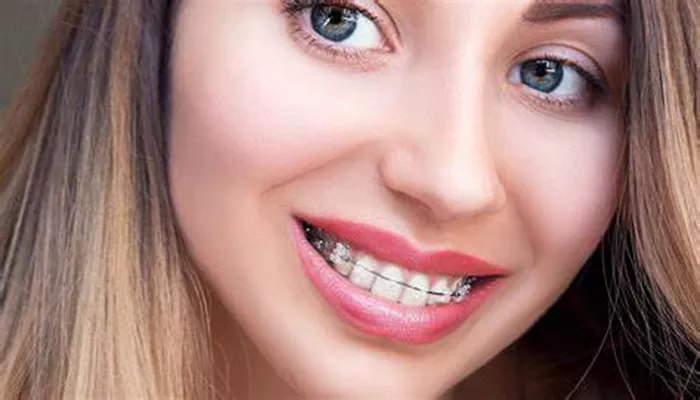Braces are a common orthodontic treatment used to correct teeth alignment issues, improve bite function, and enhance facial aesthetics. While braces can significantly improve oral health and appearance, they do make daily dental hygiene more challenging. Proper brushing with braces is crucial to prevent cavities, gum disease, and to ensure the success of the orthodontic treatment. This guide aims to provide a detailed, step-by-step explanation of how to brush teeth with braces, incorporating professional advice and popular science to make the process easier to understand and follow.
Introduction to Brushing with Braces
Braces consist of brackets attached to the teeth, connected by wires and possibly elastic bands or other accessories. These components make it difficult for toothbrushes to access all areas of the teeth and gums, increasing the risk of plaque buildup and tooth decay. Therefore, it’s essential to adopt a modified brushing technique to ensure thorough cleaning.
Step-by-Step Guide to Brushing with Braces
Choose the Right Tools
Toothbrush: Select a toothbrush with soft, rounded bristles to avoid damaging the braces or gums. Consider using an electric toothbrush, as its oscillating or rotating action can be more effective at removing plaque.
Orthodontic Brush: An orthodontic brush, also known as an interdental brush or proxy brush, has tiny bristles that can reach the hard-to-clean areas around braces and wires.
Floss: Regular dental floss or orthodontic floss threaders can help clean the spaces between teeth and under wires.
Toothpaste: Use fluoride toothpaste to strengthen tooth enamel and prevent cavities.
Prepare for Brushing
Rinse with Water: Before brushing, rinse your mouth with water to loosen food particles and debris stuck in your braces.
Apply Toothpaste: Squeeze a pea sized toothpaste onto your toothbrush.
Brushing Technique
Hold the Brush Correctly: Place the toothbrush at a 45-degree angle to the gums, where the braces are attached.
Use Gentle Pressure: Apply gentle pressure to avoid damaging the braces or gums.
Brush in Small Circles: Move the toothbrush in small, circular motions to clean the surfaces of the teeth and around the brackets.
Focus on Bracket Areas: Spend extra time brushing around the brackets and wires. Use the tip of the toothbrush to gently clean under and around the wires.
Use the Orthodontic Brush: After brushing with the regular toothbrush, use the orthodontic brush to clean the spaces between brackets and wires, as well as hard-to-reach areas.
Flossing
Thread the Floss: Use a floss threader to thread the floss under the wires if traditional flossing is difficult.
Gently Slide the Floss: Slide the floss gently between the teeth and under the gum line to remove plaque and food particles.
Wipe the Wire: If using a regular floss, wrap it around your fingers and gently wipe the wire to clean it.
Rinse and Inspect
Rinse Mouth: Rinse your mouth thoroughly with water to remove any remaining toothpaste or debris.
Inspect Braces: Look in the mirror to ensure all food particles and plaque are removed from the braces and teeth.
Additional Tips
Brush Frequently: Aim to brush your teeth at least three times a day (after meals and before bed) and floss at least once a day.
Use Mouthwash: Consider using an antiseptic mouthwash to further reduce plaque and bacteria.
Avoid Sticky and Hard Foods: Sticky foods can get stuck in braces and be difficult to remove, while hard foods can damage braces.
Regular Dental Check-ups: Visit your orthodontist and dentist regularly for check-ups and adjustments to ensure the braces are working correctly and to catch any potential problems early.
Importance of Proper Brushing with Braces
Proper brushing with braces is not just about keeping teeth clean and free from cavities; it’s also essential for the success of the orthodontic treatment. Poor oral hygiene can lead to plaque buildup, which can cause tooth decay and gum disease.
Additionally, plaque can harden into tartar, making it even more difficult to remove and potentially damaging the braces.
By following the steps outlined in this guide, you can ensure that your teeth and braces stay clean and healthy throughout your orthodontic treatment. Remember, consistent and thorough brushing is key to maintaining good oral hygiene and achieving the best possible results from your braces.
Conclusion
In conclusion, brushing teeth with braces requires a bit more effort and attention to detail than regular brushing. By using the right tools, adopting a proper brushing technique, and following additional tips, you can keep your teeth and braces clean and healthy. Regular dental check-ups and good oral hygiene practices will contribute to the success of your orthodontic treatment and help you achieve a beautiful, healthy smile.
Related topics:

